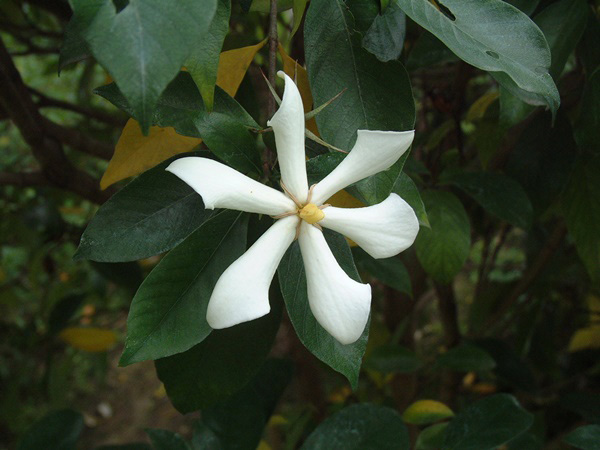Gardenia jasminoides
The common gardenia is a native aromatic plant of Taiwan, widely distributed across lowland plains and broadleaved forests throughout the island. It is also found in southern China, mainland Southeast Asia, and Japan. During spring and summer, the plant bears pure white blossoms that release a rich, elegant fragrance. The specific epithet jasminoides means “resembling jasmine,” referring to the similarity of its floral scent to that of jasmine. Traditionally in Taiwan, the flowers have been used to flavor tea, and the plant also serves as a source of essential oils, giving it potential applications in the fragrance industry.
The common gardenia is valued not only for its fragrant flowers but also for its fruit, which is rich in natural yellow pigments. These pigments have long been used in traditional crafts and the food industry. The extracted dye is commonly employed in textile coloring and has, in some regions of Taiwan, developed into a small-scale local industry that provides employment opportunities for nearby communities. The dyed products possess a natural, soft golden hue that is highly appreciated in the handicraft market. Owing to its non-toxic nature, the pigment is also used as a natural food coloring in pickled radishes and traditional pastries, aligning with modern trends favoring natural and health-conscious products.
The Chinese name of the plant originates from the resemblance of its fruit to an ancient Chinese wine vessel. Beyond its economic and cultural significance, the fruit of the common gardenia also provides food for wild birds and small mammals, contributing to local ecological interactions. At the National Museum of Natural Science, common gardenia trees are cultivated in the Orchid Island Area, Northern Lowland Area, Central Lowland Area, and Southern Lowland Area of the Botanical Garden. During the flowering season, their fragrance fills the air, offering visitors a delightful sensory experience, while the bright orange fruits that ripen later in the year attract birds and squirrels—making the area a wonderful site for close-up nature observation.

